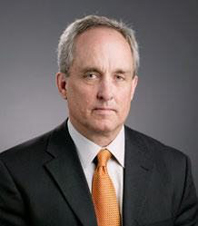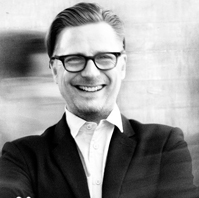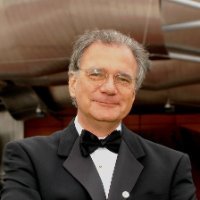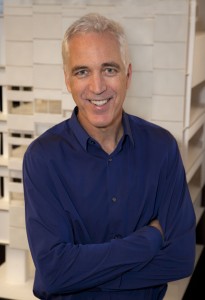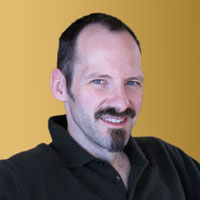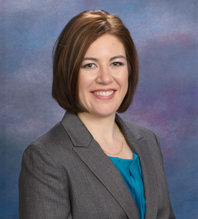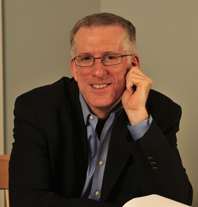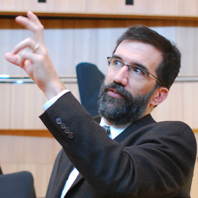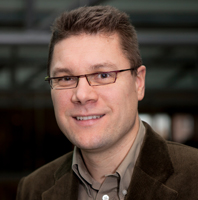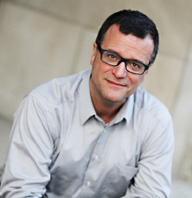Sessions
Set In Stone – Carroll Joynes
Author Carroll Joynes of the University of Chicago will discuss the study of cultural building projects in the United States looking at a building boom between and that included museums, performing arts centers and theaters.
Pritzker Pavilion Design
The acoustician, audio systems designer and executive director of Millennium Park Inc. walk us through the pavilion’s design.
The Changing Dynamic of the Audience Performer Relationship
Audiences are responding to and demanding a greater connection to performers for a more intimate experience than what has been available in traditionally derived concert halls. Projects like the Disney Concert Hall, and the success of the Mostly Mozart series in Avery Fisher Hall have captivated many an audience member and musician alike with the connection they feel to one another. How can architecture influence the way musicians and audience interact? How should a space support the performers when there isn’t a distinct line between the audience chamber and performance platform?
Putting It Together: Materials and Machines by the Theatre Consultant – Todd Hensley
Many performance spaces require adjustability to serve multiple uses. Todd Hensley, STC, will examine the assemblies designed by theatre consultants to achieve acoustic variety in performance spaces.
The Modern Concert Hall
The full range of presentations in the modern orchestral repertoire clearly includes amplified sound and video, not to mention the other programs that inhabit these spaces. How have modern designs responded to create an agile space that thrives in the current economy?
Acoustic Criteria and Architectural Expression
A case study of the University of Iowa School of Music and the use of innovative computer modeling techniques.
- Integrated Theatro-Acoustic Systems by George Shaw, Russ Cooper, Scott Crawford, part 1
- Integrated Theatro-Acoustic Systems by George Shaw, Russ Cooper, Scott Crawford, part 2
- Integrated Theatro-Acoustic Systems by George Shaw, Russ Cooper, Scott Crawford, part 3
- Integrated Theatro-Acoustic Systems by George Shaw, Russ Cooper, Scott Crawford, part 4
CHRG Initial Mandate Continues
CHRG’s initial mandate was to provide consistent documentation of a hall’s acoustic characteristics continues as we explore recent developments in measurement techniques.
What Next
The conference was concluded by revisiting and summarizing the items we discussed, address questions we may not have covered, and setting the tone for the future.
Faculty
Carroll Joynes
Carroll Joynes co-founded the Cultural Policy Center and served as executive director for its first years. He received his doctorate at UChicago in , taught at the Graduate Faculty of the New School for Social Research in New York and at New York University, and returned to UChicago as Associate Dean of Humanities in . In addition to establishing the CPC in and overseeing its development as co-director, he has served on the majority of its research projects, helping produce a comprehensive map of minority participation in Chicago cultural institutions, and contributing to Entering Cultural Communities: Diversity and Change in Nonprofit Arts.
With Norman Bradburn, he is co-principal investigator of Set in Stone, a large-scale study of cultural building in the United States. He also has served as a trustee of several cultural organizations in Chicago.
Charles Renfro
Charles Renfro is a Partner at Diller Scofidio + Renfro, a -person interdisciplinary design studio that integrates architecture, the performing arts, and the visual arts. Together with Elizabeth Diller and Ricardo Scofidio, he is intimately involved in the design of each of the studio’s projects. Charles has headed the design for the renovation and expansion of the Juilliard School at Lincoln Center for the Performing Arts, the Institute of Contemporary Art in Boston, the Creative Arts Center at Brown University, and Blur for the 2002 Swiss Expo. He currently leads design for the Rice University Opera Theater, the Berkeley Art Museum & Pacific Film Archive at the University of California, the Stanford University Art & Art History Building, and Zaryadye Park in Moscow.
Charles has served as a board member of Storefront for Art and Architecture since 2009, and has been President of the Board since 2011. In 2012, he was honored as a Rice University Distinguished Alumnus. Additionally, he holds a Master of Architecture from Columbia University’s GSAPP. He has taught at Rice, Parsons the New School for Design, School of Visual Arts, and Columbia University.
Ed Uhlir, FAIA, NCARB
Ed Uhlir was Director of Architecture, Engineering and Planning and then the Director of Research and Planning at the Chicago Park District until his appointment by Mayor Richard M. Daley as Design Director of the Millennium Park Project. He is now serving as the Executive Director of the not-for-profit Millennium Park Incorporated. Among his many achievements, Mr. Uhlir is a Fellow of the American Institute of Architects and the Chicago Chapter presented him with their Distinguished Service Award in . Millennium Park has received over thirty awards including the Barrier Free America Award presented to Mr. Uhlir by the Paralyzed Veterans of America. He is a Board member and the Secretary of NeighborSpace and is a Member of Mayor Daley’s Parks and Open Space Committee. He is also a recognized authority on park development, has lectured to a wide variety of audiences and has authored the just published “Ark in the Park, The Story of Lincoln Park Zoo.”
George Shaw
George is Partner-In-Charge for many of LMN’s most prominent public projects, with a strong emphasis on performing arts facilities, increasingly complex multi-use programs and urban infrastructure. His active project involvement is instrumental to the progressive evolution of the firm’s team-based approach, which ensures each project’s collaboration is tailored to the specific conditions of the assignment and fully leverages the collective expertise of all participants—including clients, stakeholders, design collaborators, consultants and users.
At the heart of LMN’s commitment to community and long-term client relationships, George’s leadership fosters a culture of trust, respect and professional accountability essential to productive, rewarding project experiences and creation of exceptional architecture.
Johnathan Laney
Jonathan’s youthful love of both song and gear led to some odd, but nevertheless musical integrations of discarded stereo receivers, tape machines, and World War Two Army Air Corps headphones. In a later, more entrepreneurial state of mind, these skills led to running sound for high school “mixers” with a silver speckled “tuck & roll” Kustom PA system borrowed from an unsuspecting local congregation. The opening of Alpine Valley Music Theatre during these impressionable years spurred him to his life-long career in audio.
Jonathan earned a UW-Milwaukee degree in Mass Communication, with an emphasis on radio and television and a specialization in electronic music, and began his professional life as a jazz radio personality and live sound engineer. Changing focus to system design, he steadily built his reputation as an accomplished designer of audio systems for the performing arts throughout the United States and Mexico, first for an audio contractor in Chicago, then at Jaffe Holden Scarbrough on the east coast, and back in Chicago with Talaske. At the last stop, he designed the audio systems for the Jay Pritzker Pavilion – and was paid the ultimate compliment of being asked to support the ongoing operation, optimization, and maintenance of the audio systems, a responsibility he continues to hold, even now.
Two years with venerated microphone manufacturer Shure Incorporated (where he worked in strategic planning and product development) satisfied a recent flare-up of “Gear Fever” and inspired groundbreaking product ideas about which he cannot speak. While there, a freelance collaboration for the John G. Shedd Aquarium’s Oceanarium Presentation Hall proved the fit and ultimately landed him at Threshold.
Joseph Myers
Over his twenty-plus years at Kirkegaard Associates, Joseph has helped design a significant number of the firm’s major projects. This deep experience with performing arts, academic, and worship facilities forms the foundation of his work. An active singer and sometime actor, Joseph also brings a performer’s perspective to his projects. He draws on his background in architectural engineering to develop practical, buildable solutions to design challenges, working in respectful collaboration with the architect, theater consultant, and engineers. He particularly enjoys working directly with a client to translate their needs and desires into clear acoustic goals, and to translate those goals into a beautiful, functional, and affordable facility.
Joseph is a frequent lecturer and his projects have won numerous awards. He is a graduate of Pennsylvania State University with degrees in Architectural Engineering and East Asian Studies.
Michelle Vigeant
Dr. Michelle Vigeant is an assistant professor at The Pennsylvania State University with a joint appointment in the Graduate Program in Acoustics and the Architectural Engineering Department. She leads the Sound Perception and Room Acoustics Laboratory (SPRAL), which currently consists of four graduate students. Prior to joining Penn State, Dr. Vigeant was an assistant professor at the University of Hartford in the Mechanical Engineering Department within the undergraduate Acoustics Program. She obtained her Ph.D. in Architectural Engineering, focusing on Architectural Acoustics, from the University of Nebraska-Lincoln and she received a B.Sc. in Mechanical Engineering from the University of Alberta, in Edmonton, Canada.
Paul Scarbrough
Paul Scarbrough is an acoustical design professional with over years of experience. Most recently he led the Akustiks team in designing the acoustics for the new Smith Center for the Performing Arts in Las Vegas.
Paul has developed effective working partnerships with a broad array of architects and theater planners. His formal training in architecture allows him to appreciate a diverse range of architectural styles and to engage in the design process in a constructive and collaborative fashion. He is deeply interested in the process of making great architecture and believes that the very best projects result from a seamless integration of architecture and acoustics.
He studied architecture at Rensselaer Polytechnic Institute and has served on the faculties of the 1999 and 2010 CHRG Summer Institute of the Acoustical Society of America and has been a guest critic and lecturer at Yale University.
Rick Talaske
Rick Talaske relishes great soundscapes. The engineer-turned-scientist-turned-acoustician routinely explores the world’s great concert halls and theaters. Surveying a hall’s soaring spaces and elegant architectural expressions, his mind translates a room’s geometry, the character of its surfaces, its materials, and spatial dimensions into acoustic possibilities. Analysis, investigation, and reverence converge to plumb the space’s possibilities — to take away whatever secrets and lessons it might reveal. Talaske is someone who is never satisfied with what he already knows.
Clients expect that Talaske’s rigorous technical and scientific education would result in exacting methodology and specific design standards. He is cheerily unapologetic about what might be experienced as “obsession with sound.” People don’t hire a world-class acoustician to achieve only fair results. What surprises some people is his passionate and enthusiastic advocacy for both performers and audience members. As an avid lover of live performance himself, especially classical music and live theater, he strives to create spaces that enhance live events.
Before founding his own acoustical consulting firm nearly two decades ago, Talaske was a protege of Larry Kirkegaard for 8 years, advancing quickly to senior consultant where he was assigned major design and project management responsibilities for the Portland Center for Performing Arts, Bayfront Center St. Petersburg, Ordway Music Theatre, and many music education facilities.
Russ Cooper
Russ serves as President and is a principal acoustician at Jaffe Holden. With more than 30 years of industry experience to draw from, Russ has the leadership skills to ensure that his teams deliver the highest quality deliverables on schedule and within budget. He communicates effectively with all members of a project team and believes that close collaboration is very important to a project’s success.
Russ earned a Bachelor of Science degree in acoustics and music from the University of Hartford in conjunction with the Hartt School of Music. As the principal timpanist with the Norwalk Symphony Orchestra, Russ has years of experience analyzing and addressing the challenges of onstage hearing. His ability to listen as a musician and as an acoustician gives him a unique awareness that he uses to create acoustic designs that benefit both audiences and performers. He is a member of the Acoustical Society of America.
Scott Crawford
Scott is a Design Technologist with LMN Architects and Tech Studio. He cofounded an integrated Research and Development group within LMN and is responsible for exploring the use of emerging design technologies for the purpose of opening new potentials for innovative design.
He is also the cofounder of Frankenstein Inc, a design collective that works to engage the public through designs that demonstrate creative thinking with innovative use of technology. Scott earned his Bachelor of Science degree in Psychology from University of Maryland, followed by back-to-back Masters Degrees from University of Washington in Design Computing and Architecture. He is currently instructing at UW, sharing with design professionals ways that parametric modeling, scripting, and digital fabrication can expand the range of possible design solutions.
Scott Pfeiffer
Scott’s path in architectural acoustics began on the elementary school stage, went on to roles in high school musicals and then recitals as part of his music education at Moravian College. With acoustics his main interest, he completed a Bachelor of Science in Physics with Honors in Music and then moved on to graduate studies in the Acoustics Laboratory at the Technical University of Denmark. For two decades, Scott has participated in virtually every aspect of the acoustical consulting profession, from modeling and measurements to leading the design of complex rooms, audio and video installations, and electronic enhancement systems.
Scott has been honored as a Fellow in the Acoustical Society of America for his accomplishments in the design of worship and performing arts spaces as well as his leadership in pursuing great Unanswered Questions, a topic he explored at length in the ASA’s Knudson Distinguished Lecture in 2012. He was keynote speaker at the University of Michigan’s 2013 Saturday Morning Physics conference, lecturing a rapt audience of 1,000 on physics, perception, and uniqueness. He also serves on the Knowles Hearing Center Advisory Board at Northwestern University and the University of Nebraska-Lincoln Durham School Architectural Engineering Industry Advisory Committee.
Tapio Lokki
Prof. Tapio Lokki has studied acoustics, audio signal processing, and computer science at the Helsinki University of Technology (TKK) and received an M.Sc. degree in electrical engineering in and a D.Sc.(Tech.) degree in computer science and engineering in . He continued at TKK as a lecturing researcher teaching virtual reality and making research on virtual auditory environments. In he was appointed as an Academy Research Fellow, which is a highly competed independent research position in Finland, for a period of five years.
At present Dr. Lokki is an Associate Professor (tenured) with the Department of Media Technology at Aalto University. His passion is to understand how rooms modify sound that we hear. Furthermore, Prof. Lokki has been continuing a long-term research on augmented reality audio and eyes-free user interfaces. The virtual acoustics team is funded by the Academy of Finland (since ) and by the European Research Council (ERC, since ). Prof. Lokki received this prestigious ERC Starting Grant in the first round when the success rate was 3%. Prof. Lokki has published 8 journal articles and over 100 conference papers. He has received numerous awards and is a member of 6 associations and societies, including being the president of the Acoustical Society of Finland.
Todd Hensley
Todd Hensley, ASTC, is a Partner with Schuler Shook Theatre Planners and directs the theatre consulting practice of the Chicago office. He has collaborated with the major acoustics consultants in the US. Notable projects include the Jay Pritzker Music Pavilion in Millennium Park, renovations of the Seattle and Sarasota Opera Houses, the Wentz Concert Hall for North Central College, and the upcoming Bienen School of Music Building for Northwestern University.
Todd is also a stage lighting designer and member of United Scenic Artists. He teaches stage lighting design at The Theatre School at DePaul University. He is an occasional vocalist at the weddings of his closest friends.

